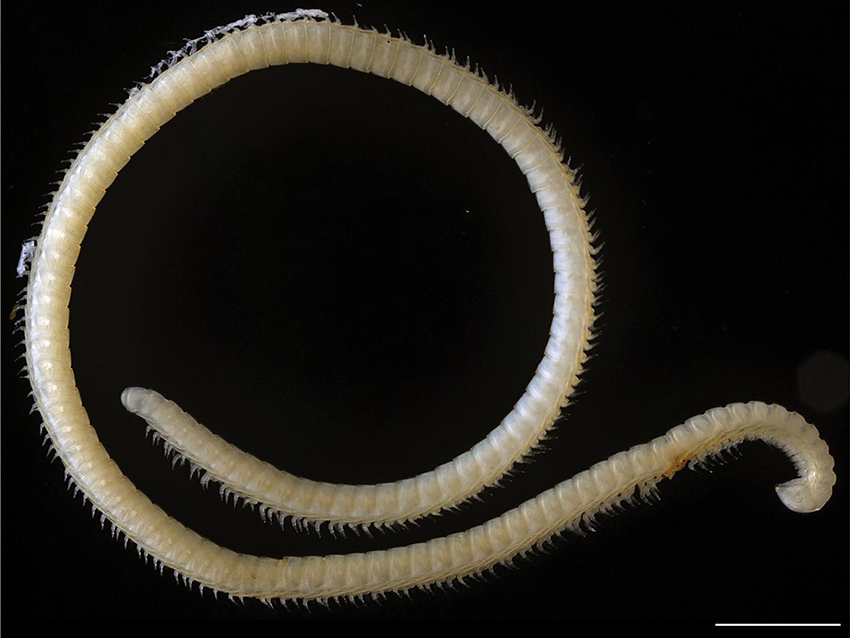The second-leggiest land-dwelling animal rests in the caves of California.
In 2006, UT research associate Jean Krejca discovered a tiny 414-legged millipede species under a rock in Lange Cave in California’s Sequoia Park. The species, which Krejca named Illacme tobini, has no eyes, lacks color pigment and has shorter legs than other cave millipedes. Its exoskeleton is thinner than that of common millipedes and covered in tiny hairs.
Krejca discovered the millipede while performing a cave-biology inventory, in which she set out to record all of the species in the cave. Krejca said that a lot of the work and surroundings can become repetitious, but when she saw the millepede she knew right away that she had come across something new.
“I had a pretty good idea that [the millipede] was different,” Krejca said.
Paul Marek, a professor of entomology at Virginia Tech, worked with Krejca to write a paper on the new species.
“The family [the millipedeillacme tobini] is contained in pre-dates the breakup of Pangea,” Marek said.
According to Marek, other species in the genus are spread through California, Indonesia, southeastern Asia, Himalayas, Indo-Burma and southern Africa.
The new millipede is part of a family that contains a larger sister-species, called Illacme plenipes, that is the leggiest terrestrial animal on the planet at 750 legs.
It is likely that there are more of the Illacme millipedes on Earth. But Marek said finding more of the I. tobini or I. plenipes is challenging because current technology does not allow researchers to explore far enough down into caves to find them.
According to Marek, advanced technology to search deep within caves has only recently become available.
“There’s this area [in some caves] that is just completely unexplored, and probably has more representatives in this genus and family and probably other crazy looking invertebrates,” Marek said.















